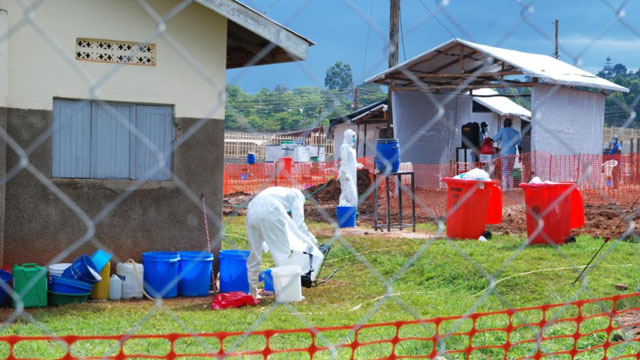
How holes in an Ebola ‘firewall’ built over the last 20 years are being plugged
SPECIAL FEATURE | RONALD MUSOKE | On Jan.11, Dr. Jane Ruth Aceng, Uganda’s Minister of Health, declared Uganda free from the Ebola Virus Disease after a 113-day battle across nine districts.
The event at the Mayor’s Gardens in Mubende Municipality in Mubende District which was the epicentre of the recent Ebola outbreak was attended by excited local, national and foreign dignitaries; including Natalie E. Brown, the U.S Ambassador to Uganda.
“Uganda put a swift end to the Ebola outbreak by ramping up key control measures such as surveillance, contact tracing and infection prevention and control,” said Dr. Aceng.
Uganda had previously suffered six Ebola outbreaks but this one was probably the most challenging. It was the country’s first Sudan ebolavirus epidemic in a decade. By the time it ended, 55 of the 142 cumulative confirmed cases were dead. Only 87 recovered making it the second most lethal outbreak.
Ending it tested the government’s mettle and President Yoweri Museveni’s renowned leadership in such health crises.
More than 50 local and international partners offered support, including the World Health Organization, the Africa Centres for Disease Control and Prevention and the East African Community.
They deployed experts, provided training in contact tracing, testing and patient care, built isolation and treatment centres and provided laboratory testing kits.
Although the Ebola Sudan virus that struck is milder than other strains, many experts feared the worst because it has no vaccines and therapeutics (specific drugs for treating the disease).
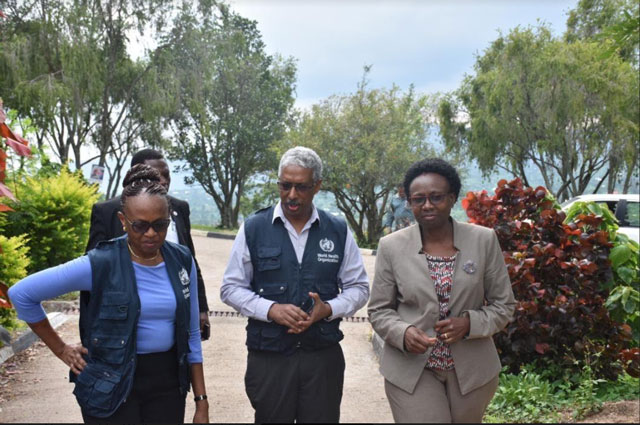
The experts were also anxious because the epicentre, Mubende District, lies along the busy “Northern Corridor,” a route which connects the Indian Ocean Kenyan port of Mombasa to the eastern Africa hinterland (Uganda, Rwanda, Burundi, eastern DR Congo and northern Tanzania).
Mubende also hosts several gold mines which attract artisanal miners and gold dealers from neighbouring countries. The potential for the virus spreading throughout the region as happened in West Africa was real.
Mubende is also a source of agricultural and forest products for Uganda’s capital city, Kampala, which is just 3hrs drive away with a population of 7 million according to the World Population review estimates.
If Ebola entered Kampala, it was feared as cases started rising and spreading, it would ground the economy of not only Uganda, but the East African region.
Anxiety mounted further when, in a few weeks between mid-September and end of November, the disease had spread to Kampala and seven other districts including near ones like Kasanda, Kyegegwa, Kagadi, Bunyangabu and farther ones like Wakiso, Jinja, and Masaka.
Unknown origin
The other challenge, as Dr. Aceng noted, was that the real cause of the Mubende outbreak remained unknown. Uganda declared the outbreak of Ebola (Sudan type) on September 20, last year.
What is known is that a case was confirmed in a village in Madudu sub-county in Mubende District, about 150km to the west of Kampala. According to the Ministry of Health, the first case was that of a youthful man who presented with several symptoms of the disease on Sept.11.
The symptoms included high-grade fever, tonic convulsions, blood-stained vomit and diarrhea, loss of appetite, pain while swallowing, chest pain, dry cough and bleeding in the eyes.
The young man had visited two private clinics successively, from Sept.11-15, without improvement. He was then referred to Mubende Regional Referral Hospital on Sept.15 where he was isolated as a suspected case of viral hemorrhagic fever.
A blood sample was collected on Sept.17 and sent to the Uganda Virus Research Institute (UVRI) in Entebbe where RT-PCR tests were conducted. The results returned positive on Sept. 19. The patient died on the same day.
Questions linger, including whether this index case; the one which was first noticed, is the primary case; the case that brought the disease into the community?
Dr Aceng also raised another question: Why do viral epidemics such as Ebola attack the country, particularly in the months of July to October? Aceng said studies are needed to find answers to these questions.
These challenges perhaps explain why several global health experts appeared relieved and applauded Uganda for doing a great job in halting the disease in record time.
Dr. Matshidiso Moeti, the WHO Regional Director for Africa thanked President Yoweri Museveni for his political leadership.
“With no vaccines and therapeutics, this was one of the most challenging Ebola outbreaks in the past five years,” said Dr. Moeti.
Dr Tedros Adhanom Ghebreyesus, the WHO Director-General was also quick to congratulate Uganda upon its “robust and comprehensive victory against Ebola.”
Dr. Ahmed Ogwell Ouma; the Acting Director General of the Addis Ababa-based Africa CDC was in attendance during the “end of Ebola declaration” in Mubende Municipality. He said Uganda had yet again set another example for her peers on the continent.
“It’s the example that we at Africa CDC are going to be using as we support other African countries in preparing to respond to various (health) emergencies here on the continent,” he said.
Painstaking work
Uganda is a hotspot for zoonotic diseases such as Ebola. Indeed, before last year’s Ebola outbreak in Mubende, there had been six episodes reported in Uganda since the turn of the millennium. The first ever reported outbreak occurred in the northern district of Gulu in the year 2000, followed by Bundibugyo (2007), Luweero (2011), Kibaale (July 2012) and Luweero (November 2012). There was also a spillover from DR Congo reported in the western border district of Kasese in June 2019.
Dr. Allan Muruta, the commissioner in charge of integrated epidemiology, surveillance and public health at the Ministry of Health, told The Independent recently that when the country was hit by its very first Ebola attack in October, 2000, “the government went on a soul-searching mission.”
That outbreak, which remains the most contagious, killed 224 people out of the 425 confirmed cases. Following the 2000 outbreak, the World Health Organization worked with the Uganda government to develop what is known as the National Technical Guidelines for Integrated Disease Surveillance and Response (IDSR).
“Just like Christians have their Bible they follow, the IDSR is our Bible,” Dr. Muruta told The Independent, “We have been having this tool since the year 2000. Each time we have new ideas, we just update it.”
The IDSR helps the country detect and respond to any disease outbreak anywhere in the country within 48 hours of notification.
The latest edition published in September, 2021, is a 590-page tome. It provides the structures of disease prevention, detection and response.
The system is built on active disease surveillance in communities by Village Health Teams (VHTs), at health facilities by health workers, and at border points of entry by trained Immigration and Port Health staff.
It also incorporates the “One Health” model; a structure which allows several government agencies to share information on the potential sources of disease outbreak. In Uganda, these include the Ministry of Water and Environment, the Uganda Wildlife Authority, the Ministry of Agriculture, Animal Industry and Fisheries and the Ministry of Health.
Cross-border surveillance
Dr. Muruta told The Independent that cross-border surveillance is another strategy. Uganda is a landlocked country surrounded by South Sudan to the north, Tanzania to the south, Rwanda to the Southwest, Kenya to the east and the Democratic Republic of Congo to the west. It has over 50 official ports of entry.
Considering that some of the Ebola outbreaks have spilt over from across the Congolese border, Ugandan authorities have had to cultivate good working relations with their counterparts.
“We have agreed on certain mechanisms on how to share information with counterparts in the DR Congo,” he told The Independent.
Dr. Muruta showed The Independent a Uganda map hanging on the wall inside his office at the Ministry of Health headquarters in Kampala which was published in 2019 in conjunction with the World Health Organization that classifies Uganda’s western frontier as “high risk” for Ebola.
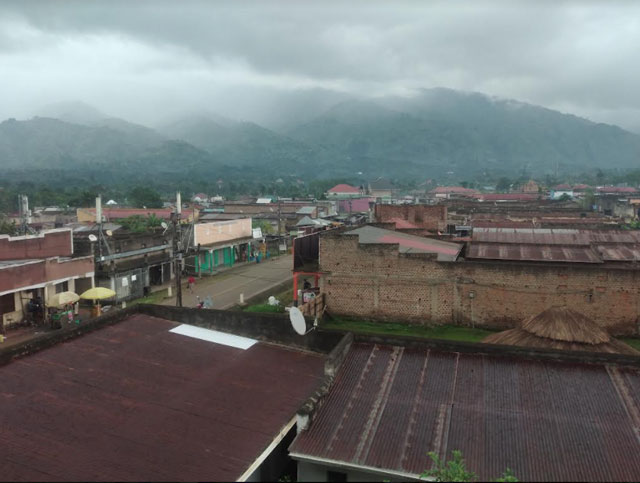
In one example that shows how this cross-border collaboration has borne fruit, Dr. Muruta explained how health authorities on either side of the common border worked together to rein-in an Ebola spillover in 2019 when some people who were under observation crossed into Uganda at the border point in Mpondwe in the western district of Kasese.
“The DR Congo authorities gave us all the information. They told us about the mother who crossed into the country. They said she was vaccinated against Ebola but the children weren’t. In fact, the mother survived but all those in her family who were not vaccinated died.”
“We don’t do surveillance just along the western frontier; we also do so along the northern border with South Sudan,” he said.
STOP Spillover project
Uganda is also part of the “Strategy To Prevent Spillover” or the STOP Spillover project, a USAID-funded “Global One Health” programme whose objective is to prevent viral zoonotic diseases and their spillovers.
In Uganda, it is hosted by Makerere University under the Africa One Health University Network (AFROHUN) and, it is coordinated by the US-based Tufts University. The project is also in Bangladesh, Cambodia, Cote d’Ivoire, Liberia, Sierra Leone, and Vietnam.
Dr. Charles Drago Kato, a lecturer of veterinary medicine in the Department of Biotechnical and Diagnostic Sciences in the College of Veterinary Medicine, Animal Resources and Biosecurity at Makerere University, is the technical lead for the surveillance, modelling and mapping hub of the project in the country.
He explained to The Independent that scientists know that most of the dangerous pathogens originate from our environment and animals to cause zoonotic diseases such as Ebola, which means they “jump” or spill-over from the source (could be bats or monkeys) to the humans.
“What the STOP Spillover project wants to do is for the pathogen to stay in the bats because we know that when it crosses into humans it can be catastrophic,” he told The Independent last November, during one of the team’s field trips to Bundibugyo District which borders the Democratic Republic of Congo and is about 370km west of Kampala.
The other objective of the project is, through research and interventions, to prevent spread as soon as possible a spillover is detected.
A STOP Spillover project national stakeholder meeting convened in Uganda before the start of the project in 2021 identified spillover points, including border entry points, wild game markets, regular markets for domestic animals and farms. The experts in Uganda, eventually prioritized the bat-human interface owing to several outbreaks of Marburg and Ebola.
Dr. Kato told The Independent that experts on the bat-human disease spread advised the project to concentrate on Bundibugyo which registered an outbreak in 2007 and is close to DR Congo.
“The bats in both countries fly back and forth across the borders,” he said. “So, we are looking at surveillance, mapping and modelling. We are also doing the waste and surface water surveillance.”
“Ultimately, we want the country to have a bat atlas because we really don’t know which species of bats we actually have and which one among those spreads Marburg or Ebola.”
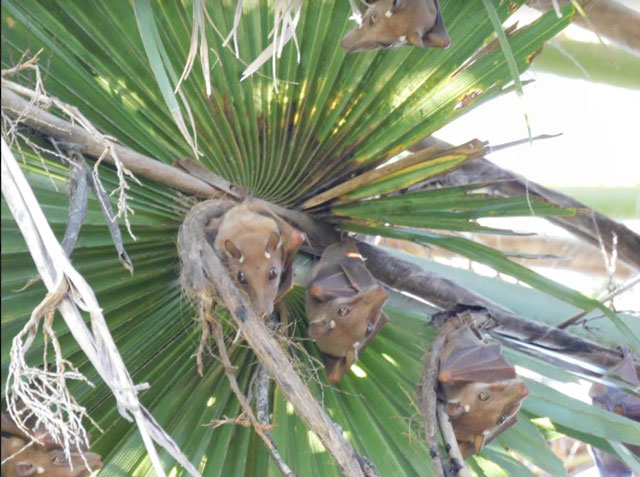
James Muleme is based at Makerere University’s School of Public Health and is the technical lead for the food, water and air hub under the project. He told The Independent that the project has focused on three sub-counties in Bundibugyo; Burondo, Harugale and Ntandi. His sub-team’s goal is to find out if there is bat DNA in some of the surface water sources.
“The bats here do not only bathe and contaminate open water sources but also nibble at fruits such as avocado, mangoes, guavas and apples. Sometimes the people in the communities eat the same fruits,” he says.
“We know that the Ebola virus may not survive outside its host for so long, however, the presence of the DNA of a bat can be used as a plan to mitigate infection.
“If we check that water sources carry bat DNA, then it means that if the bat carried the virus, there is potential for humans to pick it up when they use that water.”
The researchers discuss with local people about the bat-human interface and visit homes to assess the capacity and willingness to adopt the best practices to protect food and water resources from contamination.
“We are aiming at behaviour change of the people,” he says.
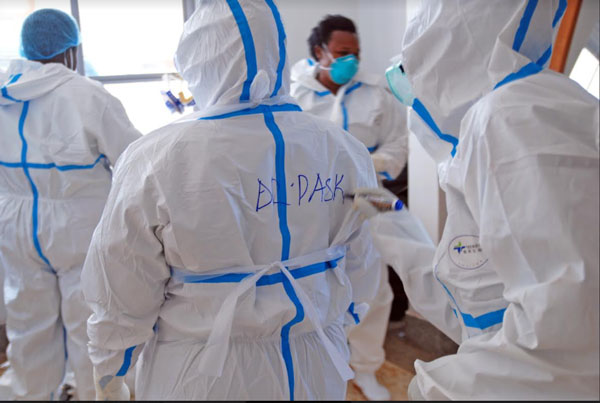
Dr. Shamilah Namusisi is a veterinary and public health expert and works as the technical lead for the risk analysis and communication hub for the STOP Spillover project in Uganda. She told The Independent that the project is looking at finding mechanisms to characterize the zoonotic diseases risks and design interventions to respond to the outbreaks. She said their findings so far reveal “that we even have deeper challenges.”
“People in some communities in the district have a deep-rooted interaction with the bats; they have told us that the bats do not only act a as a source of animal protein, they (bats) are also used to treat malnourished children, treat diseases, hold families together (used in love portions), as well as treating sexual dysfunction.”
She told The Independent that the project intends to trap some bats and identify some species. “We shall then pick samples from their saliva, blood and fecal matter and test these in the laboratories for Ebola,” she said.
Dr. Namusisi noted that what is clear is that these communities are not aware about the risks they are exposed to – and creating that understanding is crucial.
“For me, if someone eats their bat or monkey but when they fall sick they quickly run to hospital and they are able to candidly tell the doctor that look here, the previous night I ate bat meat and I think it is causing me to fall sick, that for me will be an achievement,” she said.
Preparing for the next outbreak
Preparing for the next outbreak kept coming up during the “End of Ebola declaration” at the Mayor’s Gardens in Mubende. Many said Uganda will definitely suffer another Ebola outbreak.
“It is not a question of if Ebola will strike but when it will do so,” one expert told The Independent.
Dr Aceng said as part of preparation for that event, her Ministry aims to carry out a nationwide assessment to find out where Uganda is in regards to infection prevention and control and continue with its research on vaccines, therapeutics, diagnostics, ecological studies and Ebolavirus disease risk mapping.
“We shall focus on infection prevention and control in both public and private health facilities,” she said in Mubende.
She said mobile field laboratory capacity would be strengthened and health education and promotion programmes would be supported to ensure communities are empowered and ready to respond at all times.
“While we expanded our efforts to put a strong response in place across all nine affected districts, the magic bullet has been our communities who understood the importance of doing what was needed to end the outbreak, and took action,” Aceng said.
Dr. Muruta told The Independent that despite recent success in fighting deadly pandemics such as Ebola, and each outbreak is unique, Uganda can do better if holes in their strategy are plugged.
“We may appear like we are ahead of so many countries but we know that we can do better. Our systems are not 100% foolproof but we know our weaknesses and we are still strengthening and we know we can do better,” he told The Independent.
***
This story was published with the support of Internews’ Earth Journalism Network
 The Independent Uganda: You get the Truth we Pay the Price
The Independent Uganda: You get the Truth we Pay the Price

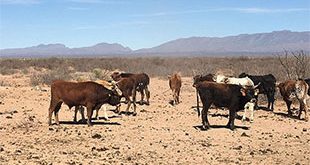


The ministry of health should involve researchers in the private sector in preparation for the next Ebola outbreak. The Ministry of Health Client Charter of 2012 recognizes researchers as stakeholders/clients, and ensure their participation in the development of health programs.
Medificwise-SMC Ltd is our registered research and consultancy firm, which offers evidence-based health education programs for adults, to prevent severe illness and complications from infectious and non-communicable diseases. Our health education programs were founded on scientific evidence obtained from studying over 400 science papers published in peer-reviewed journals. Our training packages include evidence-based guidance on the use of external cooling and heat therapy, to reduce fever and inflammation, thus, quicken recovery from malaria, influenza, monkeypox, Ebola, Covid-19, Marburg, Lassa, MERS, CCHF, typhoid fever, etc.
The US CDC health experts had published a science paper, which indicated external cooling and antipyretic medications for managing fever in monkeypox cases. Similarly, the World Health Organization (WHO) has issued guidelines, which indicated external cooling and paracetamol drugs for managing fever in Ebola and malaria cases. Both the US CDC and the WHO experts implied costly sources of external cooling (cold exposure) beyond our local means. However, we developed affordable means of external cooling that is applicable in our low-resource settings in 2002, and we have applied such to effectively manage various infections over the last 20 years. Secondly, the WHO and US CDC health experts appear not to have evidence that external cooling also has anti-inflammatory benefits, which we have. Unlike paracetamol drugs that lack anti-inflammatory benefits, an extensive body of scientific studies cited in our attached science paper concluded that external cooling and heat therapy have anti-inflammatory benefits, for preventing severe illness and complications. Recently, I submitted a science paper on these health innovations to the President of the European Investment Bank (EIB), Dr. Werner Hoyer, in November 2022. The EIB has a team of scientists in its Life Science Division, who evaluated scientific evidence supporting our health innovation and they were very impressed with it. The EIB agreed to consider financing procurement of our innovative health education program by governments and health organizations. Unfortunately, I have been writing several letters to the ministry of health (MoH) for over 3 years, but concerned officials do not respond and apparently seem not to care at all.